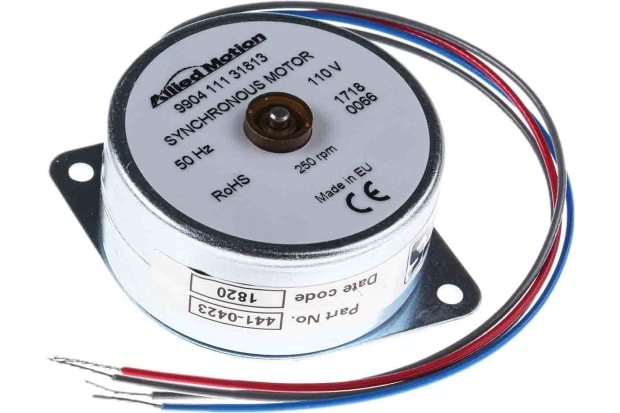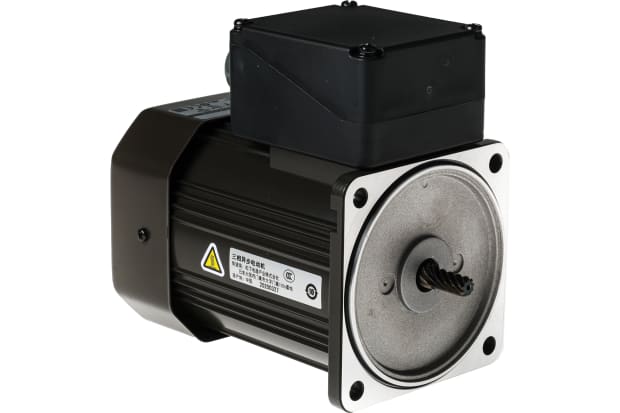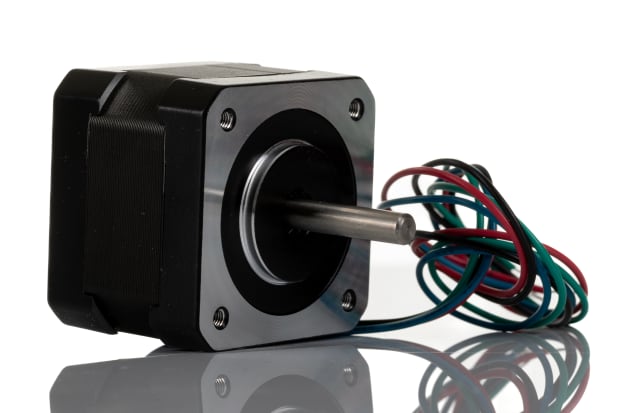- Published 12 Jun 2023
- Last Modified 20 Mar 2024
- 6 min
A Guide to Electric Motors
Whether in the home or an industrial application, electric motors are a crucial component.

Electric motors are a crucial part of industrial machinery. But how do they work, and what types are available? Our guide breaks down the differences in electric motors and explains which are the most efficient.
Types of Electric Motors
When purchasing an electric motor there are a lot of different types to consider, depending on the task required. Electrical motors commonly fall under two categories: AC for alternating current, or DC for direct current motors.
Electricity supplied to households and businesses is AC, which is an electrical current where the electrons switch back and forth at regular intervals.
Direct current is where the electrons flow in one direction only. Typically you’ll have an AC/DC adapter for many appliances (this also happens to be where a certain rock group found inspiration for their name).
The reason we use AC from the grid is that it’s much easier to step up and down with a transformer than it would if we used DC from the grid. It’s quicker, easier and therefore cheaper. Many appliances and machines run off DC. However, motors can run off both, dependent on their type.

AC Motor Types
Synchronous Motor
One of the two most popular types of AC motors (alongside induction), these motors are especially useful for jobs that require constant stability or precise movements. It is a motor that’s rotor is synchronised with the current it receives, meaning that it produces a steady and consistent speed of movement. It is used widely in ball mills for industrial applications.
There are three subtypes of this motor:
- Polyphase synchronous
- Single-phase synchronous
- Hysteresis synchronous

Induction Motor
Defined by particular use in utilising the electromagnetic fields to change energy from electric to mechanical, these motors also come in single-phase options and three-phase options. single-phase motors are more likely to be used in home appliances, whereas the industrial application of electric motors is more applicable to a three-phase motor.
Subtypes include:
- Slip
- Polyphase cage rotor
- Polyphase wound rotor
- Two-phase servo motor
DC Motor Types
Permanent Magnet Motor
These are motors that have permanent magnets mounted to the inner stator of the motor. These motors produce a lot of starting torque and are equipped with good speed regulation, as such they’re widely used in vehicles.
Series Motor
These motors have a field winding in their stator and carry current through it. Though producing a decent amount of torque, unlike a permanent magnet motor, they are unable to regulate their speed.
Shunt Motor
Also known as compound wound motors, or winding field motors, they have good speed regulation. Used often for lathe machines, conveyer belts and lifts.
It is also worth noting that DC motors can also come in two options brushed motor or brushless motor. Brushes for an electrical motor act as a mechanical commutator, whereas brushless electric motors have an electrical commutator.
Efficiency of Electric Motors
When looking at electric motors, it is not only important to understand how they work, but also how efficient they are. It is important to know that no motor is 100% energy efficient. This is because energy is lost when converting it from electrical to mechanical.
However, you can still have very operationally efficient motors and their efficiency can be calculated in order for you to have some idea of the output you will get. The motor’s efficiency can be calculated when dividing the power output in wattage, by the power input in wattage. To simplify the maths, this calculation will help you compare the amount of energy you are using, to the output you are getting, to determine how energy efficient the motor is.
Of course, there are also other types of efficiency to consider when using an electric motor. Energy efficiency will have an impact on operational efficiency; the more energy used to power your motor, the more it will cost and the less operational efficiency it will have.
Efficiency goes beyond the output of the motor itself. If you compare an electric motor to an internal combustion motor, they use 50% fewer parts and around 30% less labour to make.
What are Electric Motors Used for?

AC and DC motors are present in all areas of life, in both industrial and home settings.
AC motors are easily maintained due to the fact they have fewer moving parts and can be used in pumps, clocks, power tools fans and more. AC motors also benefit from low sound output and ease of operation, making them more flexible in use, and the reason why they are so prominent.
DC motors also have a wide range of applications, though they are the optimum choice when considering an electric motor for industrial use. They are present in sewing machines vacuum cleaners and fans. In an industrial setting, they are also present in lathe machines and drilling machines. The large amount of torque they can produce makes them great for industrial applications.
You can also find electric motors in washing machines, refrigerators, blenders and dehumidifiers. Nearly anything electric has moving parts. Inside refrigerators and air conditioners, the motor is used to drive the compressor.
The Future of Electric Motors
Electric motors will be the driving force of change in the next decade. With all new cars being sold in the UK to be electric by 2030, personal travel and industry will change drastically - all-electric fleets will be the norm.
In cars, typically it’s an AC-type electric motor that drives the wheels. You can either have a motor driving a shaft, which is then converted by gears to each wheel - or you can have independent electric motors for each wheel.
Compared to fossil fuel cars, the efficiency of these motors is astounding. Nearly 85% of the energy is converted to motion, whereas it’s only around 20% in an internal combustion engine - the rest is lost via heat.
Electric motors have already changed industry towards and cleaner, greener future. Across the next decade, this will only accelerate as our governments put in place further regulations to ensure we’re making the most of electric.